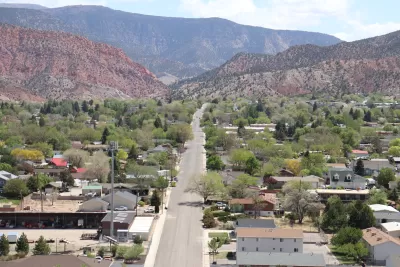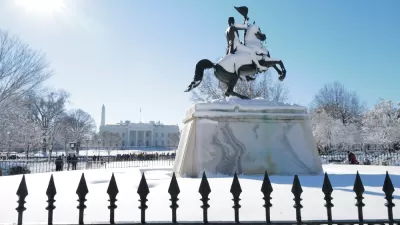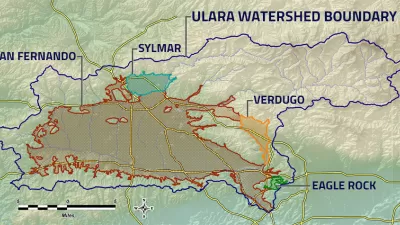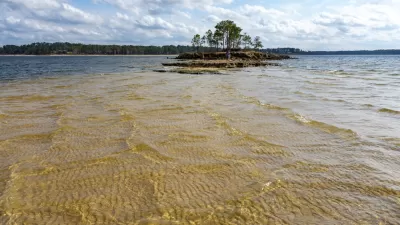The Central Iron County Water Conservancy District wants new sources of water so communities in the Cedar Valley in Utah can continue to grow. It's a story as old as the American West.

Gabrielle Canon reports for the Guardian on a controversial effort by cities located in Cedar Valley, Utah to secure more water for continued growth.
The ground in Cedar Valley is sinking and splintering. Fissures that snake through the region are a visible sign of Utah’s water woes, and the result of years spent overdrawing from an underground aquifer that supplies the area. [....] And yet Cedar City, at the heart of the valley, continues to grow. Visitors flock to nearby national parks such as Zion and Bryce Canyon, adding to the flow of new residents expected to move here in the coming years. Cedar City is already the most populous in Utah’s Iron county, and finding more water has become an existential quest.
To find more water to continue growing, Cedar Valley has identified nearby Beaver County as a potential source for new water import projects. The proposal has provoked opposition from environmentalists, ranchers, tribes, and officials from other counties, according to the article. The Central Iron County Water Conservancy District (CICWCD) has been seeking water from the Beaver Valley since 2006, according to the article, and has already cleared several legal hurdles, including a 2019 settlement that "cleared the way for the agency to seek federal approval to begin pumping," according to Canon. Still, any project to draw water from Beaver Valley will require approval from the Bureau of Land Management.
The controversy is familiar: "The battle is just the latest frontline in the water wars of the American west that have defined Utah’s history," writes Canon. Planetizen has been tracking water controversies in Utah over the years, including a recent decision by the town of Oakley to halt all development due to water supply uncertainties.
- Utah Debates Solutions to Water Shortage (December 2021)
- Utah Wants to Build Water Pipeline Amid Historic Shortages (September 2021)
- Water Supply Concerns Prompt Development Moratorium in Utah Town (June 2021)
- Changes for Big Pipeline Project to Connect Utah to the Colorado River (September 2019)
- This Is What Really, Really Cheap Water Is Actually Costing Utah (March 2018)
FULL STORY: A Utah town is running dry. Its solution stoked an age-old water war

Alabama: Trump Terminates Settlements for Black Communities Harmed By Raw Sewage
Trump deemed the landmark civil rights agreement “illegal DEI and environmental justice policy.”

Planetizen Federal Action Tracker
A weekly monitor of how Trump’s orders and actions are impacting planners and planning in America.

The 120 Year Old Tiny Home Villages That Sheltered San Francisco’s Earthquake Refugees
More than a century ago, San Francisco mobilized to house thousands of residents displaced by the 1906 earthquake. Could their strategy offer a model for the present?

LA’s Tree Emergency Goes Beyond Vandalism
After a vandal destroyed dozens of downtown LA trees, Mayor Karen Bass vowed to replace them. Days later, she slashed the city’s tree budget.

Sacramento Leads Nation With Bus-Mounted Bike Lane Enforcement Cameras
The city is the first to use its bus-mounted traffic enforcement system to cite drivers who park or drive in bike lanes.

Seattle Voters Approve Social Housing Referendum
Voters approved a corporate tax to fund the city’s housing authority despite an opposition campaign funded by Amazon and Microsoft.
Urban Design for Planners 1: Software Tools
This six-course series explores essential urban design concepts using open source software and equips planners with the tools they need to participate fully in the urban design process.
Planning for Universal Design
Learn the tools for implementing Universal Design in planning regulations.
Ada County Highway District
Clanton & Associates, Inc.
Jessamine County Fiscal Court
Institute for Housing and Urban Development Studies (IHS)
City of Grandview
Harvard GSD Executive Education
Toledo-Lucas County Plan Commissions
Salt Lake City
NYU Wagner Graduate School of Public Service





























